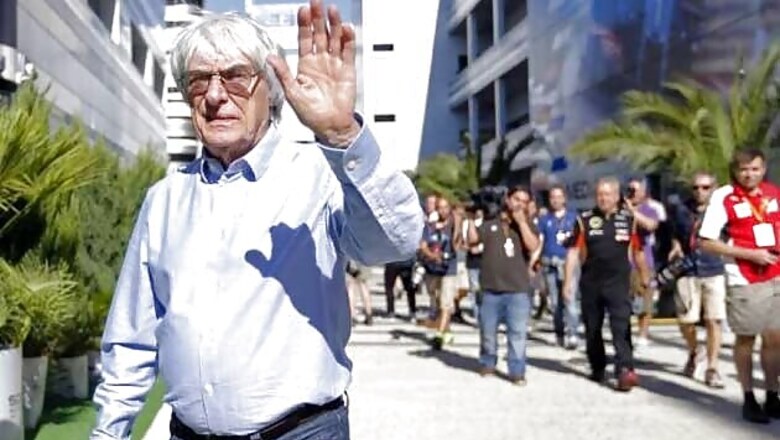
views
Money has always talked in Formula One but now, with Caterham and Marussia in administration and only nine teams in Sunday's US Grand Prix, the talk is increasingly about money itself.
The cost of competing in Formula One has become the hot topic and, with no sign of agreement on how to bring it down and share revenues more equally as smaller teams are demanding, will only become hotter.
The sport, with 19 races this year and 20 scheduled for 2015, has annual turnover in excess of $1.5 billion with more than half of that sum leaving the sport as money due to the commercial rights holders.
Formula One supremo Bernie Ecclestone told reporters on Saturday that the teams' share for this year amounted to more than $900 million.
However the prize pot is not split equally among the teams, with cash paid out according to a formula based on past and present performance.
"The problem is there is too much money probably being distributed badly - probably my fault," said Ecclestone, who turned 84 last week.
The latest edition of Britain's Autosport magazine, in estimates corroborated by sources as accurate but not confirmed by the teams, gives a breakdown of the 2013 payouts from Formula One Management.
The sport's oldest and most successful team Ferrari, who were paid a $32 million bonus and $62 million special share of the profits, were top with an estimated $166 million.
After them came Red Bull ($162 million), McLaren ($95 million), Mercedes ($92 million), Lotus ($65 million), Force India ($59 million), Williams ($56 million), Sauber ($52 million) and Toro Rosso ($50 million).
Caterham, according to the estimate, received $31 million and Marussia $10 million -- half the cost of an engine supply.
Marussia, who were ninth in the championship before going into administration, would receive significantly more next season - possibly around $45 million - had they managed to maintain their position.
DIMINISHING RETURNS
Apart from the prize money, sponsorship and shareholder contributions represent the other main sources of revenue for teams whose budgets vary hugely.
"If you look at the budgets of Marussia and then you compare the highest spender, whoever it is, Ferrari or Red Bull, you are talking about a gap from US$70 million to US$250 million," said Mercedes motorsport head Toto Wolff in Austin.
Bringing new partners into the sport has proved increasingly difficult, with some big brands preferring to sponsor the sport as a whole rather than individual outfits.
The team outgoings have also increased considerably this season due to a change in engine, with the old V8s disappearing and replaced by a more complex V6 turbo hybrid power unit.
"The fact is that with the new engine, which from a technology perspective is a great thing, the costs were passed on to all the teams," said Lotus principal Gerard Lopez.
"In our case this year between the engine and development we probably spent something like $50-60 million."
There are three engine manufacturers in Formula One, with Honda coming in next year as McLaren's partners to make it four. Mercedes and Ferrari run works teams while Red Bull are Renault's main focus.
The remaining teams have to pay for their engines and Mercedes F1's non-executive chairman Niki Lauda said Mercedes 'customer teams' paid 18 million euros ($22.54 million) a year.
The teams also face other unavoidable costs in order to compete and Lopez questioned whether it all made sense.
"A GP2 team for the whole season is going to cost four million euros. Are we really that much better? I mean are we really better to the point that a team needs to spend 300 million euros to be six seconds faster?," he asked.
"If I took a financial view of this sport, comparing GP2 to F1, and the so-called law of diminishing returns, we are most probably the worst managers there are."
A letter sent by Sauber, Force India, Marussia and Caterham to International Automobile Federation (FIA) president Jean Todt early in the season stated that a mid-table team required in the region of $120 million a year.
Of that, tyres cost $1.8 million, fuel/lubricants $1.5 million, travel $12 million and chassis production $20 million.
"The fact is there's a minimum budget that is required today to even exist in Formula One," said Lopez. "And that minimum budget has actually killed two teams."


















Comments
0 comment